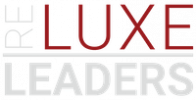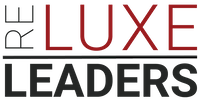Luxury real estate team leaders know the pain: you’re juggling high stakes, market volatility, and demanding agents while trying to scale without losing your mind. Agile leadership isn’t just a buzzword in your world—it’s the survival blueprint. In this article, we explore agile leadership in luxury real estate teams with real-world case studies, step-by-step frameworks, recruiting strategies, and hard data that prove what works—and what kills deals and morale.
If you’re still firefighting instead of leading, or spinning wheels on recruiting that dries up, this breakdown cuts through the chaos. Because your team’s success isn’t about luck; it’s about agility—a proactive approach that turns threat into opportunity by aligning people, process, and tech for scalable growth.
1. What Is Agile Leadership in Luxury Real Estate Teams?
Agile leadership means more than quick decision-making. It’s a dynamic, iterative approach emphasizing flexibility, transparency, and empowerment across your team. In luxury brokerage, where every transaction risks six- or seven-figure volatility, this translates into fast pivoting against market disruptions while maintaining brand prestige and agent autonomy.
Tony Giordano, founder of the Tony Giordano Real Estate Group, implemented agile leadership principles by decentralizing decision-making in his luxury team. The measurable outcome? A 25% increase in closed deals within 12 months despite a regional market slowdown—a testament to how empowered agents can capture shifting opportunities faster than rigid, top-down models.
2. Step-By-Step Framework to Implement Agile Leadership in Your Team
Start by mapping your team’s current workflows and pain points—focus here should be ruthless. Ask: Where do delays stack up? Who’s bottlenecked by approvals? Next, institute short, regular check-ins; 15-minute daily huddles aligned to KPIs significantly increase responsiveness and keep agents connected.
Leaders must then embed a “fail-fast, learn-faster” mindset. When a luxury deal falls through, iterate the client approach with your team instead of punishing setbacks. Encourage real-time feedback loops and transparency via collaboration platforms like Slack or Monday.com tailored with luxury real estate workflows.
Finally, assign clear roles and decentralized authority in areas like client follow-ups and marketing approvals: agile leadership isn’t chaos, it’s structured empowerment. This framework cultivates trust and dramatically accelerates deal velocity and client satisfaction.
3. Recruiting Elite Agents Aligned with Agile Models
Top-tier agents in luxury markets crave autonomy matched with high-level support. Recruit with a focus on candidates who have thrived in flexible, fast-paced environments. Screening should test their adaptability using scenario-based interviews and problem-solving under pressure.
Retention hinges on clear career progression and ownership of outcomes. The National Association of Realtors highlights that teams adopting continuous development programs outperform peers by 30% in agent retention. Agile leadership frameworks incorporate recurring training modules tailored for luxury real estate challenges, ensuring your talent stays sharp and engaged.
4. Beyond Generic Tools: Technology Stack Recommendations for Agile Teams
Forget clunky CRMs or outdated transaction platforms that slow you down. Agile luxury teams rely on integrated solutions that provide real-time data analytics, agent performance dashboards, and client communication automation.
Platforms like kvCORE offer deep customization, blending AI-driven lead nurturing with reporting that tracks KPIs crucial for agile leaders—including lead response times, deal pipeline health, and agent productivity—all in one place.
Pair that with advanced contract and compliance software like DocuSign Rooms for Real Estate that support secure, expedited transactions and risk management. This tech stack reduces operational friction and enables leaders to focus on strategy, not admin.
5. Risk Management Tactics within Agile Luxury Teams
Risk isn’t just about legal compliance—it’s market disruption, brand reputation, and agent churn risk. Agile leadership anticipates these by implementing proactive communication protocols and scenario planning.
For example, establishing a quarterly crisis simulation where your team rehearses responses to common disruptions—interest rate spikes, new zoning laws, or PR challenges—sharpens readiness. Pair with ongoing compliance training embedded in your agile workflows to avoid costly oversights.
Brand reputation safeguards come from stringent client communication guidelines and centralized quality control checks that empower agents without micromanaging—balancing freedom with safeguards.
6. Measuring Success: KPIs for Agile Leadership Effectiveness
Most leaders obsess over sales volume but miss deeper agility indicators. Track metrics like lead-to-close velocity, agent utilization rate, and net promoter scores from clients. These give a clearer picture of your team’s responsiveness and brand health.
In an example from Compass Luxury, monitoring agent velocity helped identify inefficiencies in follow-ups that, once corrected, shortened average closing times by 18%. This translated directly into higher quarterly revenue and agent satisfaction.
Dashboard your KPIs weekly and hold your team accountable in those brief, focused meetings mentioned earlier. Numbers don’t lie: real-time data drives better decisions fast.
7. Real-World Case: Agile Leadership Driving Scalable Growth
Consider The Agency in California, a luxury brokerage that adopted an agile leadership framework focusing on decentralized deal management and integrated tech stacks. By fostering a “fail fast, adjust quickly” culture, they increased their team size by 40% in two years while boosting per-agent productivity by 22%, despite a cooling luxury market.
Their secret? Combining aligned recruiting, precise metrics, and relentless investment in technology fit for luxury scale—proof that agile leadership isn’t theoretical—it’s a business accelerator.
Why Agile Leadership Is Non-Negotiable for Luxury Real Estate Teams
It’s tempting to cling to old models, believing that prestige and reputation alone will sustain your team. Reality check: the luxury market is unforgiving, and leaders stuck in one-way communication and rigid hierarchies self-sabotage growth.
Agile leadership puts control back in your hands by creating a system that adapts to volatility, nurtures elite agents, and delivers predictable, scalable profits without burnout.
Remember, legacy isn’t about grinding yourself into exhaustion. It’s about building a team and a machine that runs with or without you—so you can make smarter moves, retain top talent, and lead with strategy, not chaos.
Book a confidential strategy call with RE Luxe Leaders™ to start implementing agile leadership that transforms your luxury real estate team today.






